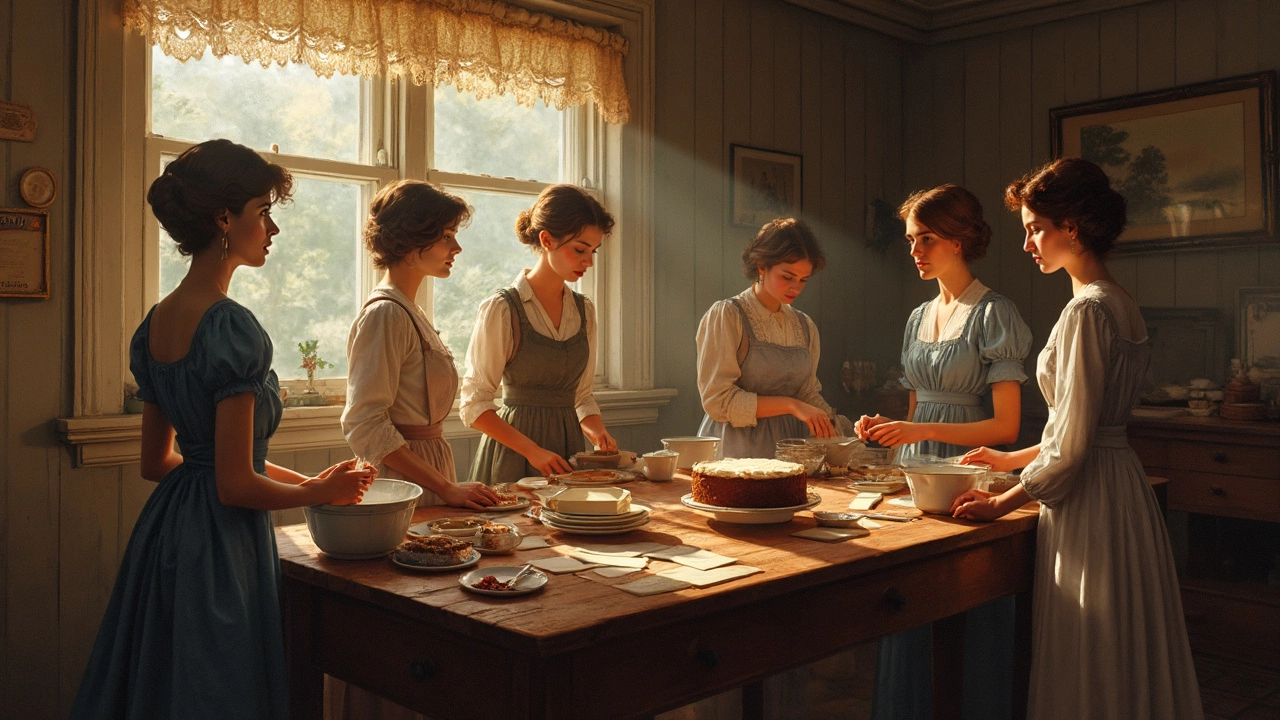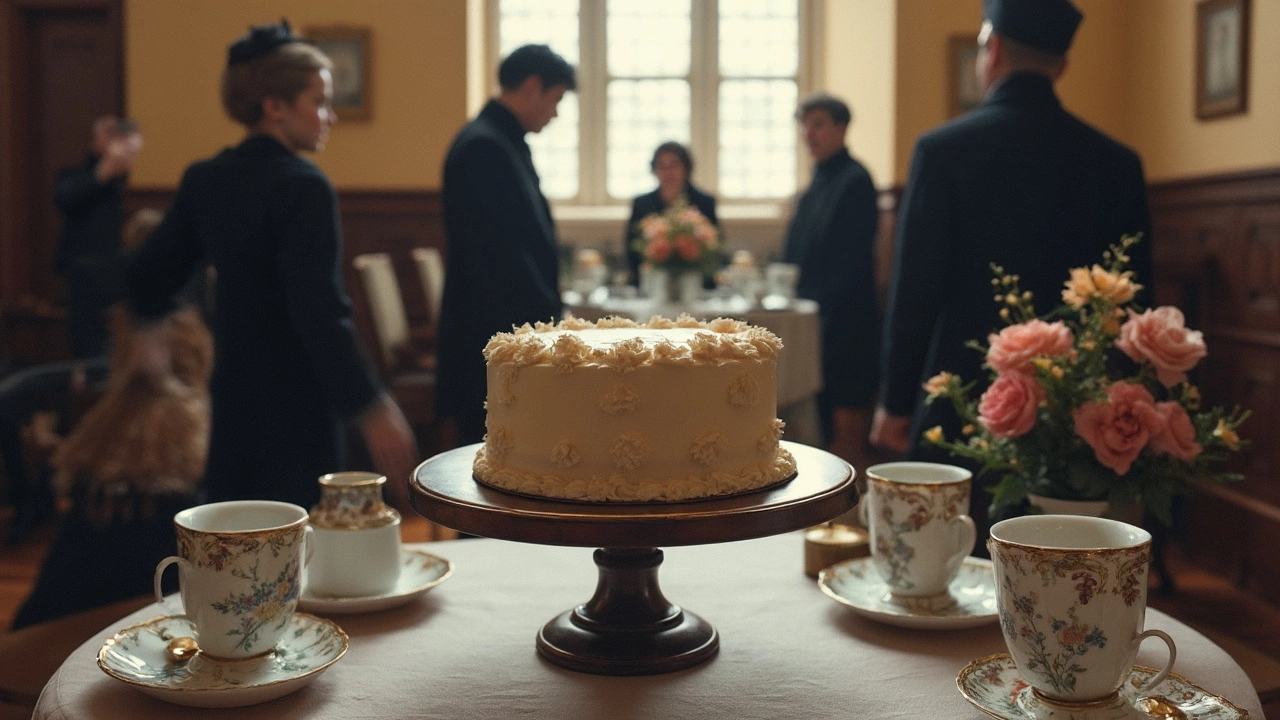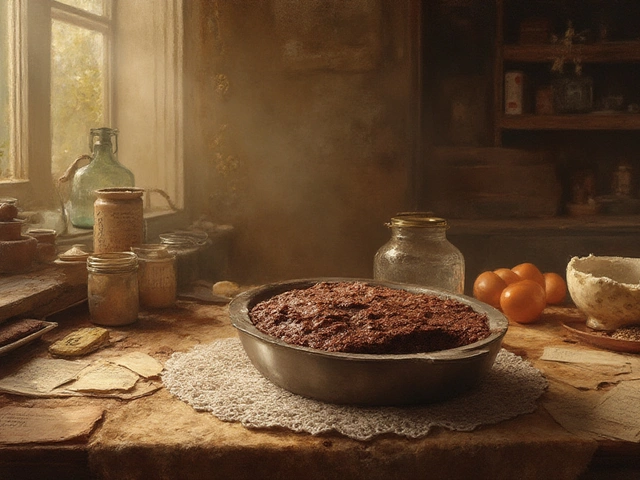
People hear the name "funeral cake" and either get curious, or a bit freaked out. Why would anyone call a dessert something so gloomy? The answer goes way beyond just a name—it's rooted in history and how people support each other during tough times.
Back in the day, families and neighbors would gather after a funeral to comfort each other. And, of course, food always made its way to the table. Funeral cake wasn’t just a sweet treat—it was a way to share warmth, show care, and offer something familiar in a rough moment. The cake’s name stuck simply because it became a tradition for these gatherings.
Many of these cakes were simple to make and easy to slice for a crowd. Think spiced loaves, pound cakes, or sheet cakes that used ingredients people always had at home. They traveled well, didn’t need fancy decoration, and felt comforting—just what everyone needed.
- What Exactly Is Funeral Cake?
- How the Name 'Funeral Cake' Came About
- Traditions Behind Funeral Cakes
- Popular Funeral Cake Recipes
- Tips for Making Funeral Cake at Home
- Funeral Cake: Bringing People Together
What Exactly Is Funeral Cake?
Funeral cake sounds like it’d be something spooky or strange, but honestly, it’s just a regular cake with a special job. This cake’s main purpose? Comfort at gatherings right after a funeral. It’s actually not one single recipe—funeral cake can change depending on where you are or your family background. But it always has a few things in common: it’s simple, easy to share, and sturdy enough to travel to someone else’s house without falling apart.
The most common funeral cakes in the U.S. are either pound cakes or spiced cakes. In the South, you’ll hear about funeral cakes being almost the same as a buttery pound cake, while in the Midwest you might find a cinnamon coffee cake or a firm chocolate cake. All of these have one goal: to feed a crowd without any fuss.
One thing people love about funeral cake is how reliable and practical it is. You don’t need any fancy icing, just a dust of powdered sugar or a bit of glaze. The cake is about being there for others, not showing off baking skills.
| Region | Common Type of Cake |
|---|---|
| American South | Pound cake, Lemon Bundt cake |
| Midwest | Cinnamon coffee cake, Sheet cake |
| United Kingdom | Soul cake (spiced, with currants) |
| Germany | Butterkuchen (buttery sheet cake) |
So, if someone asks what funeral cake is, just say it’s the cake you can count on—something that helps people connect during tough times. You’re looking at comfort food with a story, and it’s usually made from what anyone’s got sitting in their pantry.
How the Name 'Funeral Cake' Came About
So, why the name? The story goes back to times when funerals didn’t mean black-tie dinners or catered events. Instead, neighbors came together to help out a grieving family. Someone in the community always showed up with food—especially cake—to make things a little easier. Over time, these cakes just became known as “funeral cakes.”
In the U.S., this tradition picked up in the 18th and 19th centuries. The cakes were practical. People needed something easy to bake in big batches, something that could sit out and still taste good. A spiced loaf cake was really popular for this reason. In Victorian England, the custom was even more formal: guests were given small fruitcakes wrapped in printed paper as a funeral favor to take home.
Here’s the thing: the funeral cake was about togetherness more than sweetness. It meant, “You matter. We’re here for you.” The name stuck, especially in rural areas and among certain church groups, because the gesture was always the same—comfort through food.
- Many early American cookbooks listed funeral cake recipes right next to bread and pound cake, showing how normal it was for the time.
- These cakes never had fancy frosting or layers—they were plain, hearty, meant for sharing.
| Country | Typical Funeral Cake | Why Used |
|---|---|---|
| USA (South) | Pound cake or spice cake | Feeds a crowd, keeps well |
| England | Fruitcake in paper or box | Given as keepsake |
| Germany | Streuselkuchen | Easy to portion at gatherings |
So when you hear "funeral cake," it’s really about a shared moment and a bit of kindness—history and heart all mixed up into something you can eat without needing a silver fork.
Traditions Behind Funeral Cakes
The story of funeral cakes stretches back centuries, with roots in both Europe and America. In the UK, there’s a record from the 1800s of little spiced cakes called "funeral biscuits," which were wrapped up and handed out after memorial services. They weren't just snacks—they were often wrapped in paper stamped with skulls or crosses, so you’d know the occasion wasn’t exactly a birthday party. The U.S. Southern states picked up similar habits, turning out pound cakes, gingerbread, and apple cakes for post-funeral gatherings.
Bringing cake was more than a sweet gesture. It helped families feed everyone who came to pay their respects. Most people didn’t have much time or energy to cook after a loss, so friends and neighbors stepped up. These baked goods doubled as comfort food and a sign of solidarity. There’s even an old etiquette book from the 1870s that called on church women to "get together and bake for the mourning family" after a death in the community.
Because recipes traveled between families and regions, there’s no one right way to make a funeral cake. Some traditions leaned toward dense fruit cakes, because they lasted longer. Others favored simple sheet cakes that could be sliced for dozens of guests. Here’s a snapshot showing some traditional cakes found at funerals across a few regions:
| Region | Common Funeral Cake | Typical Ingredients |
|---|---|---|
| England | Funeral Biscuits | Spices, flour, butter, sugar |
| U.S. South | Pound Cake | Flour, butter, eggs, sugar |
| Germany | Lebkuchen | Honey, nuts, spices |
One thing ties these traditions together: everyone pitched in, and the cake was for sharing. People didn’t worry about fancy decorations. Instead, they focused on making something sturdy and satisfying so everyone had a chance to break bread, remember the person who passed, and draw a bit closer. That shared feeling is exactly why the name funeral cake stuck around, and why the custom still pops up in church halls and living rooms today.

Popular Funeral Cake Recipes
No two funeral cakes look exactly alike, but there are some recipes that keep popping up across generations and regions. The idea is always the same: something easy to make, travels well, and brings people together. Let’s look at a few of the most popular versions people still bake today.
Probably the most classic is the southern-style funeral cake. This is usually a moist chocolate sheet cake, sometimes called "Texas Sheet Cake." It’s easy to make in bulk and doesn’t require too much fuss. Here’s what you’ll usually find in one:
- All-purpose flour
- Sugar
- Cocoa powder
- Buttermilk
- Butter
- Eggs
- Simple chocolate icing poured on while the cake is hot
Another favorite, especially in the Midwest, is a spiced applesauce cake. It uses cinnamon, cloves, and nutmeg to amp up the flavor, and plenty of applesauce to keep the cake tender for days. After all, sometimes these cakes had to last through a whole weekend of visitors and coming-and-going guests.
- All-purpose flour
- Sugar
- Eggs
- Applesauce
- Cinnamon
- Cloves and nutmeg
- Raisins or nuts (optional)
Don’t forget about pound cake. This one shows up at funerals all over, especially because the rich flavor and simplicity taste familiar to just about everyone. It’s pretty much equal parts butter, sugar, eggs, and flour, and holds up well for serving dozens of people.
If you like numbers, here’s a peek at just how often some of these cakes are searched for online each year:
| Funeral Cake Recipe | Average Annual US Google Searches |
|---|---|
| Texas Sheet Cake | 110,000 |
| Applesauce Cake | 35,000 |
| Pound Cake | 144,000 |
It’s clear that these cakes have staying power, whether it’s a simple loaf or a gooey sheet cake. If you want to try a funeral cake yourself, you don’t need any special skills—just a bit of time and the basics from your pantry. These cakes still do exactly what they were meant to: bring comfort and connection, one slice at a time.
Tips for Making Funeral Cake at Home
Making your own funeral cake isn’t as tough as it sounds. Most recipes are straightforward and use basic pantry staples. That's why they worked so well for big gatherings. Here’s how you can make a classic funeral cake that’s just as comforting as the originals.
- Stick with Simple Ingredients: Traditional funeral cakes use flour, sugar, eggs, butter or oil, and some sort of warm spice—usually cinnamon or nutmeg. Sometimes people tossed in dried fruit, nuts, or a splash of vanilla if they had it around. No need for anything fancy.
- Choose Your Pan Wisely: Go for a 9x13-inch rectangular pan or even loaf pans. Funeral cakes are meant to be sliceable, portable, and easy to share—so you want something sturdy.
- Don’t Overmix: Too much mixing makes your cake tough. Stir until everything’s just blended together. If you’re using nuts or raisins, gently fold them in last.
- Make It Ahead: These cakes actually taste better the next day. Wrap it up and let it sit overnight—this helps the flavors meld and the cake slice more evenly.
- Glaze or No Glaze: Some folks like a simple powdered sugar glaze poured on top. Totally up to you, but remember: a thick, gooey frosting isn’t traditional.
- Easy to Double: Need to feed a big group? Double the batch and use a sheet pan. Perfect for potlucks, family get-togethers, and, yes, any gathering.
If you’re curious about what people usually toss into their cakes, here’s a quick breakdown based on classic recipes:
| Ingredient | Percent of Classic Recipes |
|---|---|
| Cinnamon | 83% |
| Raisins or dried fruit | 65% |
| Chopped walnuts or pecans | 59% |
| Powdered sugar glaze | 44% |
| Grated apple or carrot | 31% |
If you like, try swapping in different spices or nuts, or leave them out if you want extra plain comfort food. Just don’t skip the rest time after baking—friends swear this is what really makes a funeral cake so tasty. And yes, it freezes well, so you can bake ahead for when you know you’ll need something quick and homemade.
Funeral Cake: Bringing People Together
Food has always been the shortcut to comfort in hard times. When people lost someone, neighbors and family would show up with casseroles, rolls, and, you guessed it, funeral cake. It wasn’t just about filling a plate. This simple cake meant, “I’m here for you.”
What makes funeral cake so special in these moments? It’s the simplicity and shareability. It’s easy to slice up for a crowd, can handle sitting out for hours without going bad, and doesn’t need a fridge. Plus, most recipes use affordable pantry basics, so anyone could pitch in.
In rural America, especially through the 1800s and early 1900s, funeral cakes became just as important as hot coffee or a potluck at the church after a service. In the South, you’d spot buttery pound cake or chess squares. In the Midwest, streusel-topped coffee cake or spice cake showed up a lot. Each region put its own spin on it, but the idea stayed the same: everyone chipping in, taking care of one another when words fell short.
Check this out—here’s how often food, especially cakes, shows up in funeral customs across cultures (based on a survey from the Funeral and Memorial Information Council, 2023):
| Country/Region | Common Funeral Food | % of Respondents Using Cake |
|---|---|---|
| USA | Pound Cake, Angel Food Cake | 74% |
| UK | Funeral Biscuits, Seed Cake | 61% |
| Germany | Streuselkuchen | 58% |
| Southern USA | Pecan Pie, Pound Cake | 82% |
Want to support a grieving friend? You don’t need a grand gesture—just a homemade cake and a knock on their door makes a world of difference. It’s about being present. That’s why funeral cake isn’t just food—it’s an embrace you can eat.





